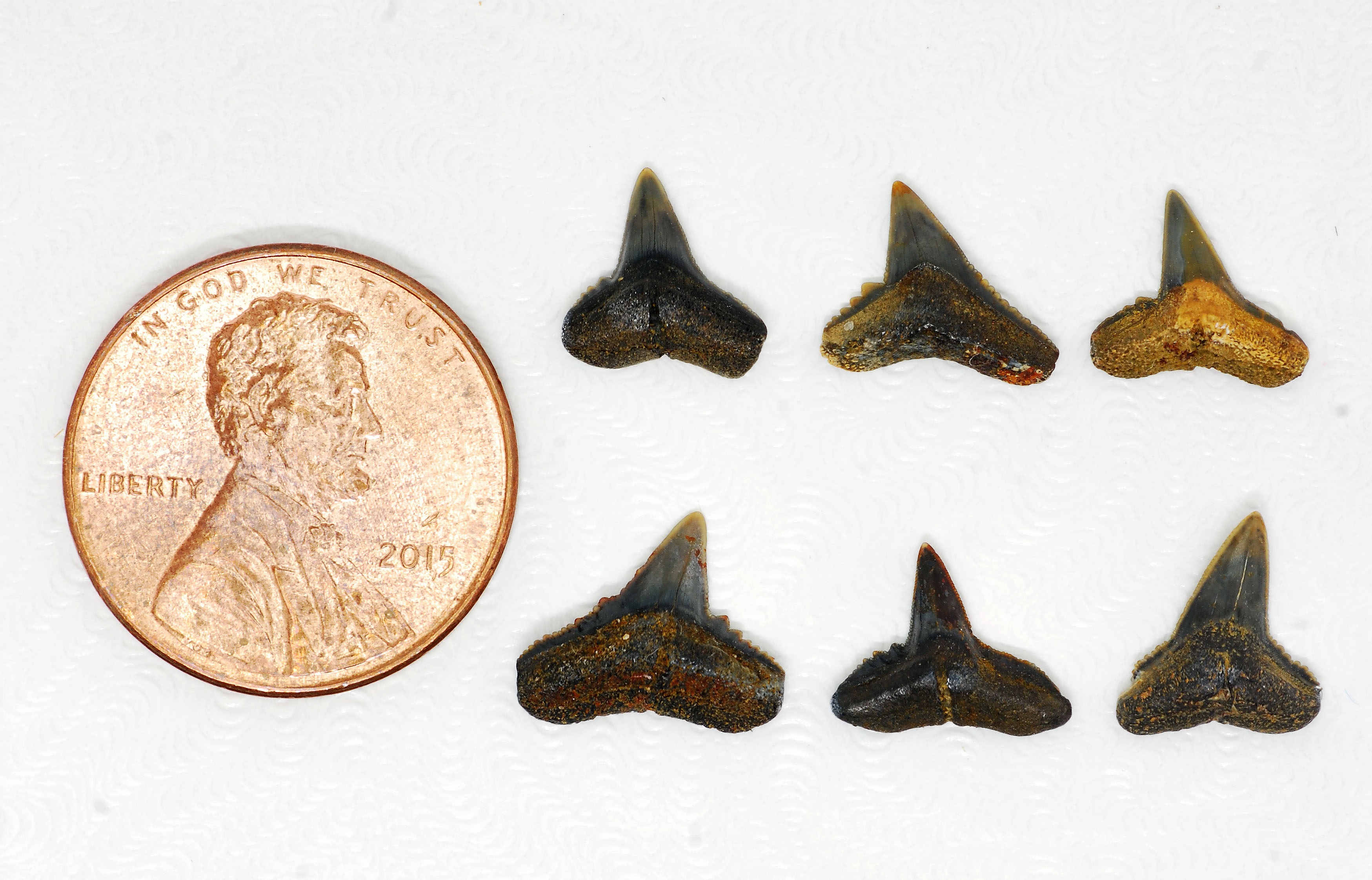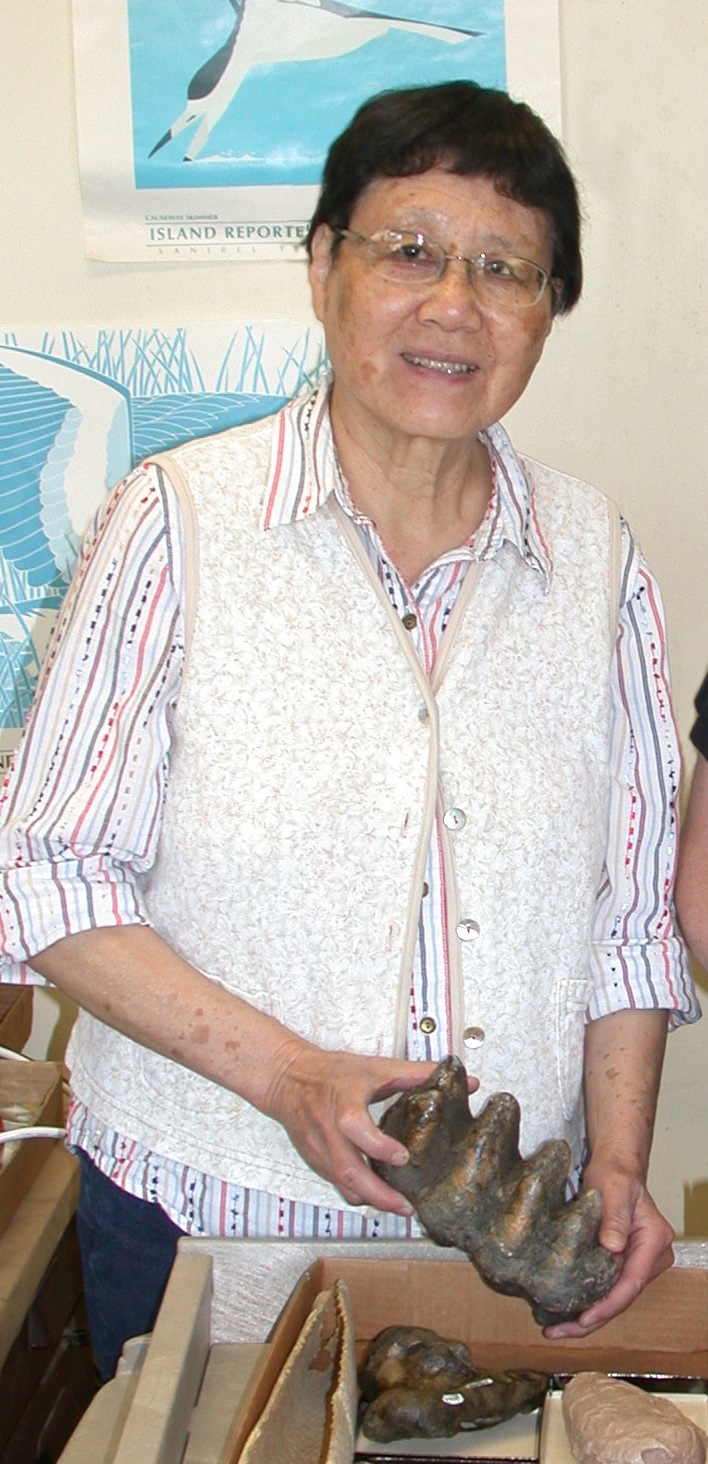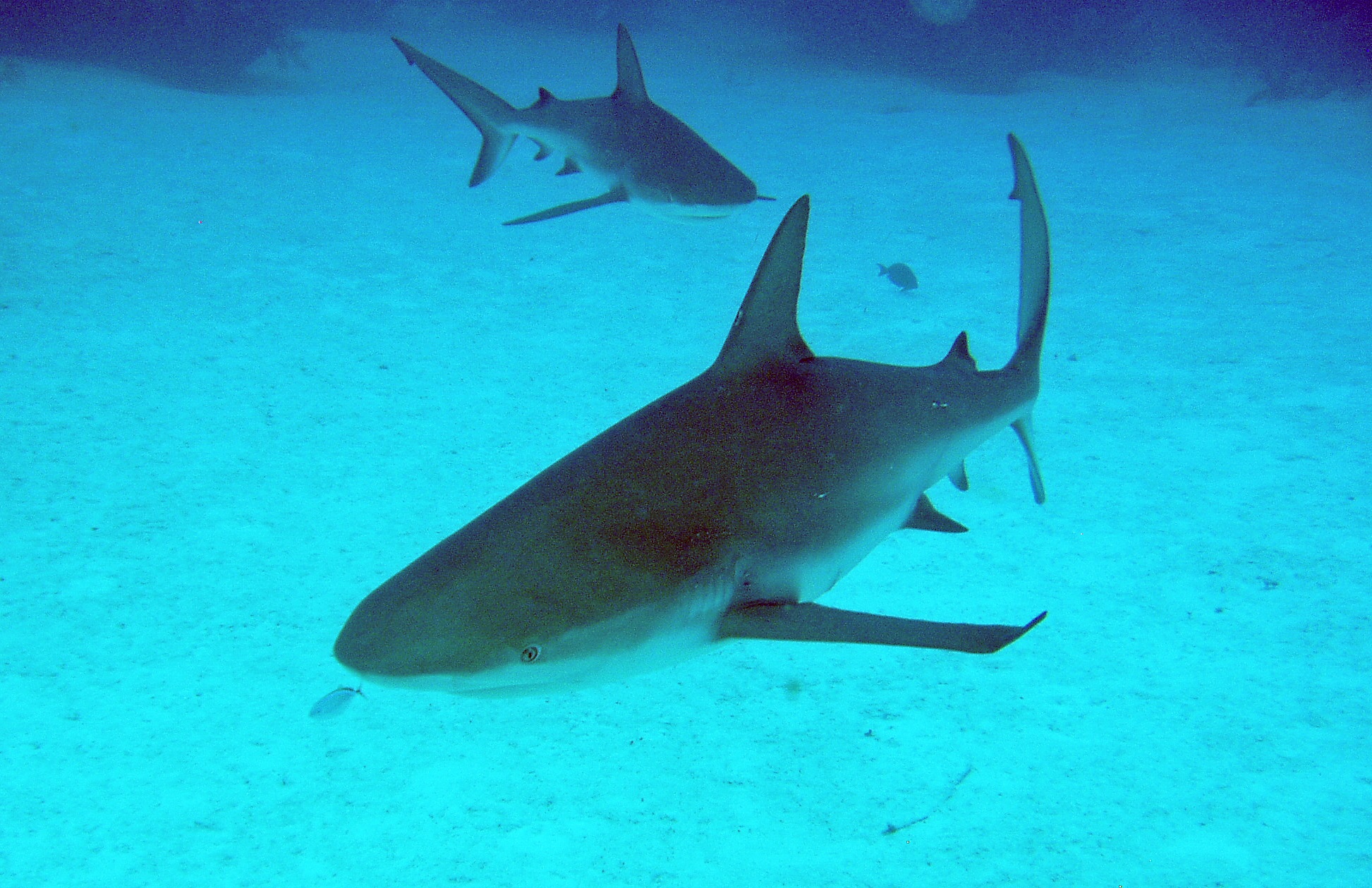40 Million-Year-Old Fossil Shark Named in Honor of LSU Collection Manager Suyin Ting
December 23, 2021

Fossil Carcharhinus tingae teeth.
– Credit: Jun Ebersole, McWane Science Center, Birmingham, Alabama.
LSU Museum of Natural Science’s Vertebrate Paleontology, or VP, Collections Manager Suyin Ting, was recently honored by having a 40-million-year-old extinct shark species named after her.
David Cicimurri, curator of natural history at the South Carolina State Museum in Columbia, and Jun Ebersole, director of collections at the McWane Science Center in Birmingham, Alabama, chose to honor Ting for her many contributions to vertebrate paleontology by naming the new species of extinct shark, or Carcharhinus tingae, after her. Their paper on Gulf Coastal Plain elasmobranchs has come out in the same week that Ting is retiring after 26 years as the VP Collections Manager.

LSU Museum of Natural Science’s Vertebrate Paleontology Collections Manager Suyin Ting.
– Credit: LSU
“I am very honored to be recognized by my peers for my work,” Ting said.
Ting, who is retiring on December 23, came to LSU as a visiting scholar from China in 1980 and again in 1988. She received her Ph.D. from LSU in 1995, the same year she started working at the LSU Museum of Natural Science under her Ph.D. advisor, the late Curator of Vertebrate Paleontology Judith Schiebout.
Ting’s research has specialized in early Tertiary, or Paleocene-Early Eocene, mammals and stratigraphy, for which she has contributed to five books and 41 peer-reviewed journal articles. It was due to this incredible contribution to her field that she was honored.
For years, the fossil shark teeth that made this discovery possible lay unidentified in the museum’s vertebrate paleontology collection. Cicimurri and Ebersole recognized them as belonging to a new species and with their help, many other fish fossils in the collection were also identified.
During their two-day visit to LSU in 2020, they were able to photograph specimens and gather enough data to identify much of the unknown material that had, up until this point, simply been labeled “fish” due to the lack of a fossil fish specialist. While it is not uncommon for paleontology collections to have many unidentified fossils, the contribution of these two visiting researchers is significant.
The researchers spent months studying the teeth, comparing them to the teeth of other fossil and modern-day sharks.
“By examining the teeth of living sharks, we were able to determine that the fossil species was closely related to modern Requiem Sharks, so we used jaws of modern species to reconstruct how the teeth were arranged in the mouth of the extinct species,” Cicimurri said.
According to the researchers, Carcharhinus tingae teeth are relatively common in Louisiana, but have not yet been found elsewhere. This discovery is evidence that Carcharhinus tingae lived in an ancient ocean that covered what is now Louisiana.
“This honor is nice, but more important is [Cicimurri and Ebersole’s] contribution to the LSU Vertebrate Paleontology collection. It is huge,” Ting said. “I would like to thank them for their hard work.”
The two researchers came to LSU to work on a book project originally organized by the late Curator of Vertebrate Paleontology Schiebout before she passed in 2020. The fish experts have written a chapter for the book “Vertebrate Fossils of Louisiana,” which is still in preparation.
This new discovery is documented in the scientific paper, New Paleogene elasmobranch (Chondrichthyes) records from the Gulf Coastal Plain of the United States, including a new species of Carcharhinus de Blainville, 1816, published in the journal, Cainozoic Research.

Modern requiem sharks, relatives to the extinct shark, Carcharhinus tingae, whose teeth are commonly found only in Louisiana.
– Credit: James St. John


